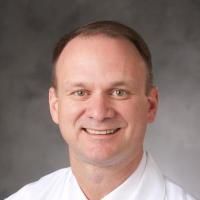Vascularized Fibula TMJ Reconstruction: A Report of Five Cases featuring Computerized Patient-specific Surgical Planning.
Date
2022-08
Journal Title
Journal ISSN
Volume Title
Repository Usage Stats
views
downloads
Citation Stats
Attention Stats
Abstract
Background
Mandibular defects involving the condyle represent a complex reconstructive challenge for restoring proper function of the temporomandibular joint because it requires precise bone graft alignment, or alloplastic materials, for complete restoration of joint function. The use of computerized patient-specific surgical planning (CPSSP) technology can aid in the anatomic reconstruction of mandibular condyle defects with a vascularized free fibula flap without the need for additional adjuncts. The purpose of this study was to analyze clinical and functional outcomes after reconstruction of mandibular condyle defects using only a free fibula graft with the assistance of virtual surgery techniques.Methods
A retrospective review was performed to identify all patients who underwent mandibular reconstruction utilizing CPSSP with only a free fibula flap without any temporomandibular joint adjuncts after a hemimandibulectomy with total condylectomy.Results
From 2018 to 2021, five patients underwent reconstruction of mandibular defects involving the condyle with CPSSP technology and preservation of the native temporomandibular articulating disk. The average age was 62 years (range, 44-73 years). The average follow-up period was 29.2 months (range, 9-46 months). Flap survival was 100% (N = 5). The maximal interincisal opening range for all patients was 22-45 mm with no lateral deviation or subjective joint pain. No patients experienced progressive joint hypomobility or condylar migration.Conclusion
The use of CPSSP technology can aid in the anatomic reconstruction of mandibular condyle defects with a vascularized free fibula flap through precise planning and intraoperative manipulation with optimal functional outcomes.Type
Department
Description
Provenance
Subjects
Citation
Permalink
Published Version (Please cite this version)
Publication Info
Powers, David B, John Breeze and Detlev Erdmann (2022). Vascularized Fibula TMJ Reconstruction: A Report of Five Cases featuring Computerized Patient-specific Surgical Planning. Plastic and reconstructive surgery. Global open, 10(8). p. e4465. 10.1097/gox.0000000000004465 Retrieved from https://hdl.handle.net/10161/26962.
This is constructed from limited available data and may be imprecise. To cite this article, please review & use the official citation provided by the journal.
Collections
Scholars@Duke

David Bryan Powers
Dr. Powers currently serves as a Professor of Surgery, and Director of the Craniomaxillofacial Trauma Program, at Duke University Medical Center. Additionally, he is the Fellowship Director for the Craniomaxillofacial Trauma and Reconstructive Surgery fellowship within the Department of Surgery. His surgical experience in facial trauma was attained during a military career highlighted by the acute management of ballistic and other injuries of warfare, as well as performing secondary and tertiary facial reconstructive surgery during various staff assignments at Wilford Hall USAF Medical Center, the Walter Reed National Military Medical Center – Bethesda and the R Adams Cowley Shock Trauma Center in Baltimore, Maryland. He lectures and has published extensively on the management of ballistic and high-energy transfer injuries to the craniomaxillofacial skeleton, comprehensive reconstruction techniques for facial trauma, and the use of computer-aided surgical planning and patient-specific implants for anatomic rehabilitation after catastrophic craniomaxillofacial injuries.

Detlev Erdmann
Unless otherwise indicated, scholarly articles published by Duke faculty members are made available here with a CC-BY-NC (Creative Commons Attribution Non-Commercial) license, as enabled by the Duke Open Access Policy. If you wish to use the materials in ways not already permitted under CC-BY-NC, please consult the copyright owner. Other materials are made available here through the author’s grant of a non-exclusive license to make their work openly accessible.
